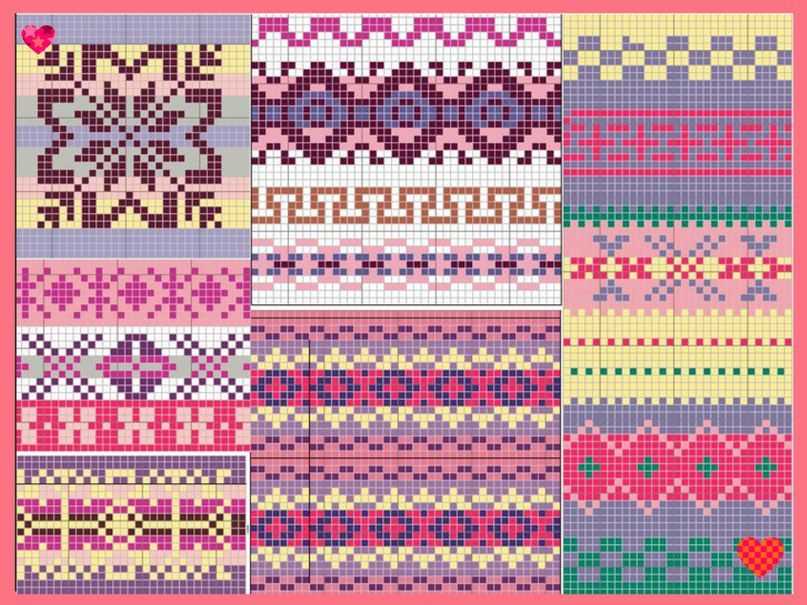
The Faroe Islands, a remote archipelago located in the North Atlantic, is known for its stunning natural landscapes and unique cultural heritage. One aspect of this heritage that has gained international attention is the traditional knitting patterns of the Faroese people. These patterns, passed down through generations, are not only aesthetically beautiful, but also steeped in rich symbolism and cultural significance.
Faroe Islands knitting patterns are characterized by their intricate designs and delicate craftsmanship. They often feature motifs inspired by the island’s natural surroundings, such as waves, birds, and flowers. The patterns are typically worked in a variety of stitches, including cables, lace, and colorwork, resulting in a visually captivating and highly textured fabric.
One of the most iconic Faroe Islands knitting patterns is the “round yoke” design, which features a circular pattern around the neckline of a sweater or cardigan. This design is said to represent both the unity of the community and the cyclical nature of life on the islands. Another popular pattern is the “star” motif, which symbolizes the guiding light of the North Star and is often used in accessories such as hats and mittens.
Faroe Islands knitting patterns are not only visually appealing, but also serve a practical purpose. The harsh climate of the North Atlantic requires warm and durable clothing, and the intricate patterns not only add aesthetic value, but also help to trap air and provide insulation. This combination of beauty and functionality has made Faroese knitwear highly sought after by both locals and visitors alike.
Faroe Islands Knitting Patterns

Knitting has been a significant part of the cultural heritage of the Faroe Islands for centuries. This remote archipelago, located between Norway and Iceland, has a long-standing tradition of producing intricate and beautiful knitted garments. The unique knitting patterns of the Faroe Islands reflect the islanders’ connection to their environment and their rich cultural history.
One of the most distinctive features of Faroese knitting patterns is their use of geometric motifs. These motifs often include traditional Faroese symbols such as stars, crosses, and waves, which are inspired by the islands’ natural surroundings. In addition to the geometric motifs, Faroese knitters also incorporate elements of local flora and fauna into their designs, such as birds, fish, and flowers. This combination of geometric and natural elements creates a visually striking and highly individualistic style of knitting.
Another characteristic of Faroese knitting patterns is their complexity and attention to detail. Faroese knitters are known for their skill and precision, and their patterns often involve intricate stitchwork and delicate lace designs. These patterns are typically passed down through generations, with each knitter adding their own unique touch to the design. The resulting garments are not only functional but also works of art, showcasing the creativity and craftsmanship of the Faroese people.
The versatility of Faroese knitting patterns is also worth noting. While many of the traditional patterns are used to create warm and cozy sweaters and shawls, they can also be adapted to other types of garments and accessories. For example, Faroese patterns can be used to knit hats, mittens, socks, and even household items like blankets and pillow covers. This adaptability allows knitters to explore and experiment with different techniques and styles, ensuring that the tradition of Faroese knitting continues to evolve and thrive.
In conclusion, Faroese knitting patterns are a remarkable testament to the rich cultural heritage of the Faroe Islands. Through their use of intricate geometric motifs, attention to detail, and adaptability, these patterns have become emblematic of the islanders’ connection to their natural environment and their craftsmanship. Whether you are an experienced knitter or just starting out, exploring the world of Faroese knitting patterns is sure to inspire and excite you.
About the Faroe Islands Knitting Tradition
The Faroe Islands, a small archipelago located in the North Atlantic Ocean, is known for its rich knitting tradition. Knitting has been an integral part of Faroese culture for centuries, playing a significant role in both the practical and cultural aspects of everyday life. The unique geographical and climatic conditions of the islands have contributed to the development of distinct knitting patterns and techniques that are passed down through generations.
The Faroe Islands knitting tradition is rooted in the need for warmth and protection against the harsh weather conditions that prevail on the islands. The local sheep, known as “Føroyska Rosurin,” have a unique wool that is prized for its exceptional quality and warmth. The knitters of the Faroe Islands have honed their skills and knowledge over the years, creating intricate patterns that are not only functional but also aesthetically pleasing.
One of the most distinctive features of Faroese knitting patterns is the use of intricate colorwork. Knitters often incorporate multiple colors into their designs, creating beautiful geometric motifs and motifs inspired by local nature and wildlife. The traditional patterns depict elements such as waves, birds, and flowers, reflecting the close connection between the Faroe Islands and its natural surroundings.
The Faroe Islands knitting tradition is not just limited to garments but extends to various accessories and household items as well. Hats, gloves, socks, and shawls are some of the popular items that showcase the craftsmanship and creativity of Faroese knitters. These knitted pieces not only provide warmth but also serve as a means of self-expression and cultural identity.
In recent years, the Faroe Islands knitting tradition has gained international recognition and appreciation. Knitting enthusiasts from around the world are drawn to the unique patterns and techniques that have been preserved and cherished by the local community. The Faroe Islands continue to inspire and influence the world of knitting, keeping alive a tradition that is at the heart of Faroese culture.
Knitting has a long and rich history in the Faroe Islands, with patterns and techniques passed down through the generations. The unique geography and climate of the islands have shaped the traditional knitting practices, resulting in distinct patterns and motifs that are still cherished today.
Origin of Faroese Knitting Patterns
The origins of Faroese knitting patterns can be traced back to the arrival of the Norse settlers in the 9th century. The harsh conditions of the Faroe Islands necessitated warm and durable clothing, and knitting became an essential skill for survival.
Faroese knitting patterns are characterized by their intricate designs and intricate colorwork. Geometric patterns, inspired by the natural surroundings of the islands, are often used, as well as motifs depicting local flora and fauna. These patterns were traditionally passed down from mother to daughter, ensuring the preservation of the island’s knitting heritage.
Over time, Faroese knitting patterns have evolved and adapted to changing fashion trends and influences from neighboring countries. However, the traditional motifs and techniques remain an integral part of the Faroese cultural identity. Today, Faroese knitting patterns are still highly valued and sought after, with many local artisans continuing to produce traditional garments using these unique designs.
The Significance of Faroe Islands Knitting Patterns
The knitting traditions of the Faroe Islands have a rich cultural and historical significance. Knitting has been a vital part of the islanders’ way of life for centuries, providing them with warm and durable clothing in the harsh and unpredictable climate of the North Atlantic. The intricate and unique knitting patterns passed down through generations tell stories of tradition, community, and creativity.
Faroe Islands knitting patterns are characterized by their geometric designs and symmetrical motifs, often inspired by nature and the surrounding landscapes. Each pattern holds meaning and symbolism, reflecting the interconnectedness of the islanders with their environment. For example, the fish scale pattern represents the abundant marine life that has sustained the islanders for generations, while the chevron pattern symbolizes the rhythm of the ocean waves.
The process of creating Faroese knitting patterns is deeply rooted in the cultural heritage of the islands. The knitting techniques and designs are typically taught within families, with mothers passing down their skills to their daughters. This transmission of knowledge not only preserves the traditions but also strengthens the bond between generations and reinforces the sense of community and identity among the islanders.
Faroe Islands knitting patterns have gained recognition beyond the islands themselves. The unique beauty and cultural significance of these patterns have captivated the interest of knitters and fashion enthusiasts worldwide. Designers incorporate Faroese knitting techniques and motifs into contemporary designs, showcasing the timeless appeal and versatility of these traditional patterns.
Traditional Faroese Knitting Techniques

Faroe Islands knitting is a centuries-old tradition that has been passed down through generations. The unique knitting techniques used in the Faroe Islands have their roots in Norse traditions and have evolved over time to create intricate and beautiful patterns. These techniques are still practiced today, preserving the cultural heritage of the Faroese people.
One of the key techniques in Faroese knitting is the use of the “three needles” method. This involves knitting with three separate needles instead of the more common two. By using three needles, knitters can create intricate patterns and textures, adding depth and dimension to their projects. This technique is often used to create the distinctive “puffin stitch,” which mimics the feathers of the puffin bird.
Puffin Stitch:
- Start by casting on an odd number of stitches.
- Row 1: Knit the first stitch, then slip the next stitch purlwise onto the right-hand needle. Knit the following stitch, then pass the slipped stitch over the knitted stitch. Repeat this pattern across the row.
- Row 2: Purl all stitches.
- Repeat these two rows to create the puffin stitch pattern.
In addition to the three-needle method, Faroese knitters also use a variety of intricate stitch patterns and motifs inspired by the natural world. These patterns often incorporate elements such as waves, birds, and flowers, reflecting the island’s rugged landscapes and wildlife. The designs are created using a combination of knit and purl stitches, resulting in stunning textures and patterns.
Wave Stitch:
- Cast on a multiple of 10 stitches, plus one extra stitch.
- Row 1: Knit all stitches.
- Row 2: Purl all stitches.
- Row 3: Knit 2, *knit 3 together, yarn over, knit 1, yarn over, slip 1, knit 2 together, pass slipped stitch over, knit 1, repeat from * to last 3 stitches, knit 2.
- Row 4: Purl all stitches.
- Repeat these four rows to create the wave stitch pattern.
These are just a few examples of the traditional Faroese knitting techniques and patterns that have been cherished for generations. The intricate designs and unique stitch patterns are a testament to the skill and artistry of Faroese knitters, and they continue to inspire and delight knitters around the world.
Popular Faroese Knitting Patterns

Faroese knitting patterns have a rich history and are known for their intricate designs and traditional motifs. These patterns often incorporate elements inspired by the natural landscapes and cultural heritage of the Faroe Islands. Here are some popular Faroese knitting patterns that have captivated knitters all over the world.
1. Oyranes Shawl
The Oyranes shawl is a classic Faroese knitting pattern that has become a favorite among knitters. This shawl features a unique construction, with a central gusset that allows it to sit perfectly on the shoulders and stay in place. The intricate lace and cable motifs in the shawl represent the waves and rocky cliffs found along the coastline of the Faroe Islands.
2. Fugloy Sweater
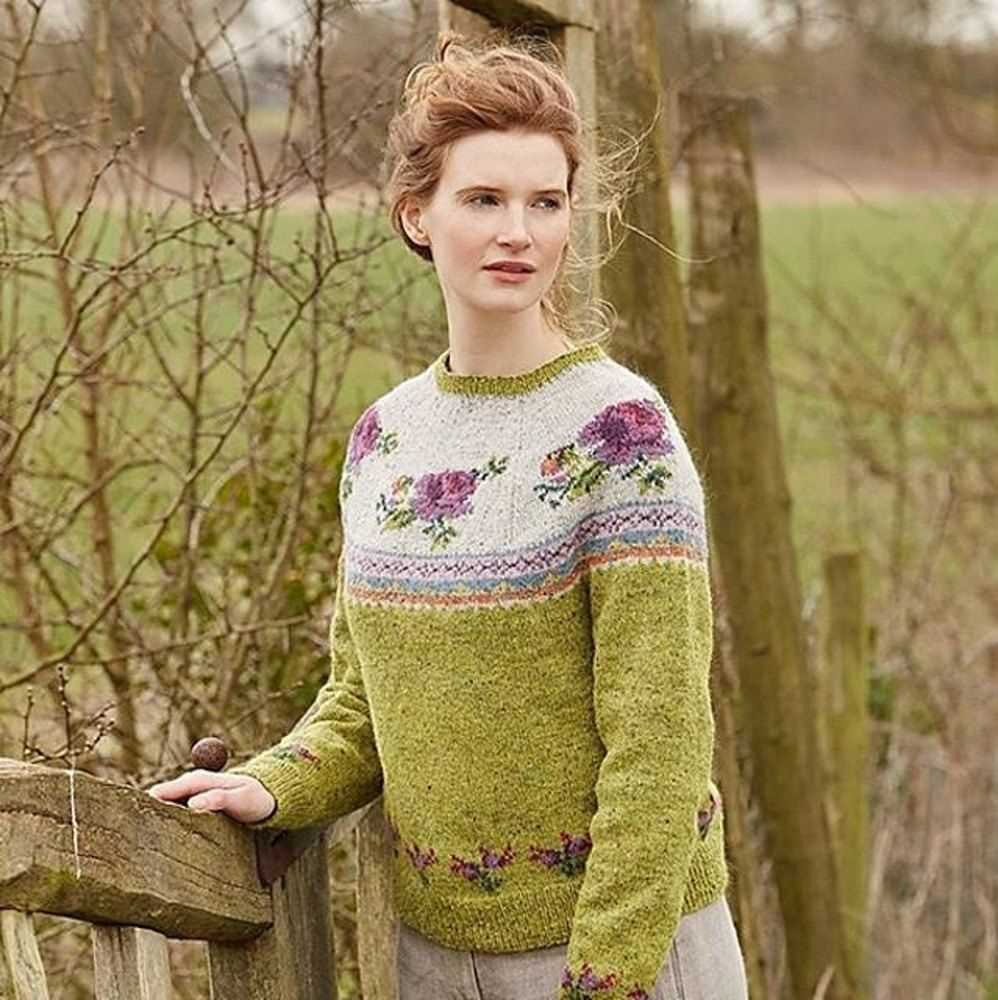
The Fugloy sweater is a popular traditional Faroese knitting pattern that showcases the skill and craftsmanship of the Faroese knitters. This sweater is often knit using the traditional Faroese steek technique, where the front opening and armholes are cut open after knitting. The Fugloy sweater typically features geometric patterns and motifs inspired by the traditional Faroese textiles.
3. Eysturoy Socks
The Eysturoy socks are another beloved Faroese knitting pattern. These socks are known for their intricate colorwork and traditional patterns, such as the tree of life or the eight-petal rose. The Eysturoy socks are traditionally knit using a combination of natural-colored wool and dyed yarn, creating a beautiful contrast and highlighting the intricate designs.
4. Vágar Hat

The Vágar hat is a classic Faroese knitting pattern that is both practical and stylish. This hat is typically knit using the traditional Faroese beanie construction, which allows it to fit snugly on the head and keep it warm in the cold Faroe Islands weather. The Vágar hat often features bold colorwork patterns and motifs inspired by the traditional Faroese knitting traditions.
5. Sandoy Blanket
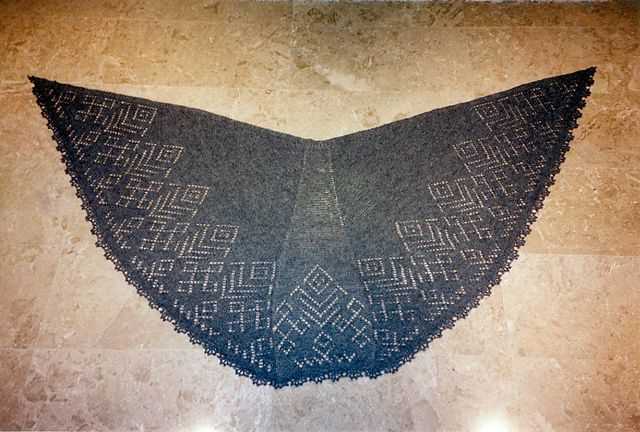
The Sandoy blanket is a stunning Faroese knitting pattern that is perfect for cozying up on cold winter nights. This blanket is often knit using the traditional Faroese hap construction, which creates a warm and enveloping blanket. The Sandoy blanket features intricate lace and cable patterns that are inspired by the rugged beauty of the Faroe Islands landscape.
These are just a few examples of the popular Faroese knitting patterns that have gained international recognition. Each pattern showcases the unique heritage and artistic skills of the Faroese knitters, making them truly special and cherished by knitters around the world.
Finding and Using Faroese Knitting Patterns
If you are interested in exploring the rich tradition of Faroese knitting patterns, there are several ways to find and use these unique designs. Faroese knitting patterns are known for their intricate motifs and traditional techniques that have been passed down through generations. Whether you are a seasoned knitter or just starting out, incorporating Faroese patterns into your projects can add a touch of cultural heritage and beauty.
1. Research Faroese Knitting Books
One of the best ways to discover Faroese knitting patterns is to explore books dedicated to this art form. There are several publications that showcase a wide variety of patterns, ranging from traditional designs to more modern interpretations. Some popular books include “Faroese Shawls” by Vibeke Lind and “Faroese Knitting Patterns” by Marianne Isager. These books not only provide step-by-step instructions but also delve into the history and significance of these patterns, giving you a deeper understanding of Faroese knitting traditions.
2. Join Online Knitting Communities
Another great way to find and use Faroese knitting patterns is to connect with other knitters who share your interest. Joining online knitting communities or forums can provide you with a wealth of resources, including links to free patterns, advice on techniques, and even the opportunity to participate in knit-alongs or virtual workshops. These communities are a treasure trove of knowledge, and you can learn from experienced knitters who have already explored Faroese knitting patterns.
3. Visit Local Yarn Stores
If you prefer a more hands-on approach, consider visiting local yarn stores that specialize in traditional or ethnic knitting supplies. Many of these stores carry Faroese knitting patterns and can offer guidance on choosing the right yarn and needles for your project. Additionally, the staff at these stores may be able to recommend workshops or classes where you can learn the specific techniques used in Faroese knitting.
4. Experiment and Adapt
Once you have found a Faroese knitting pattern that inspires you, don’t be afraid to experiment and adapt it to suit your preferences. Faroese patterns have a flexible nature that allows for creativity and personalization. You can modify the colors, adjust the size, or even combine different motifs from various patterns. This is an opportunity to make your knitting truly unique and reflective of your own style.
Incorporating Faroese knitting patterns into your projects can be a rewarding and fulfilling experience. Not only will you be creating beautiful and functional items, but you will also be honoring a centuries-old tradition. Whether you choose to knit a Faroese shawl, a pair of socks, or a cozy sweater, these patterns will add a touch of history and artistry to your knitting repertoire.
The Evolution of Faroese Knitting Patterns
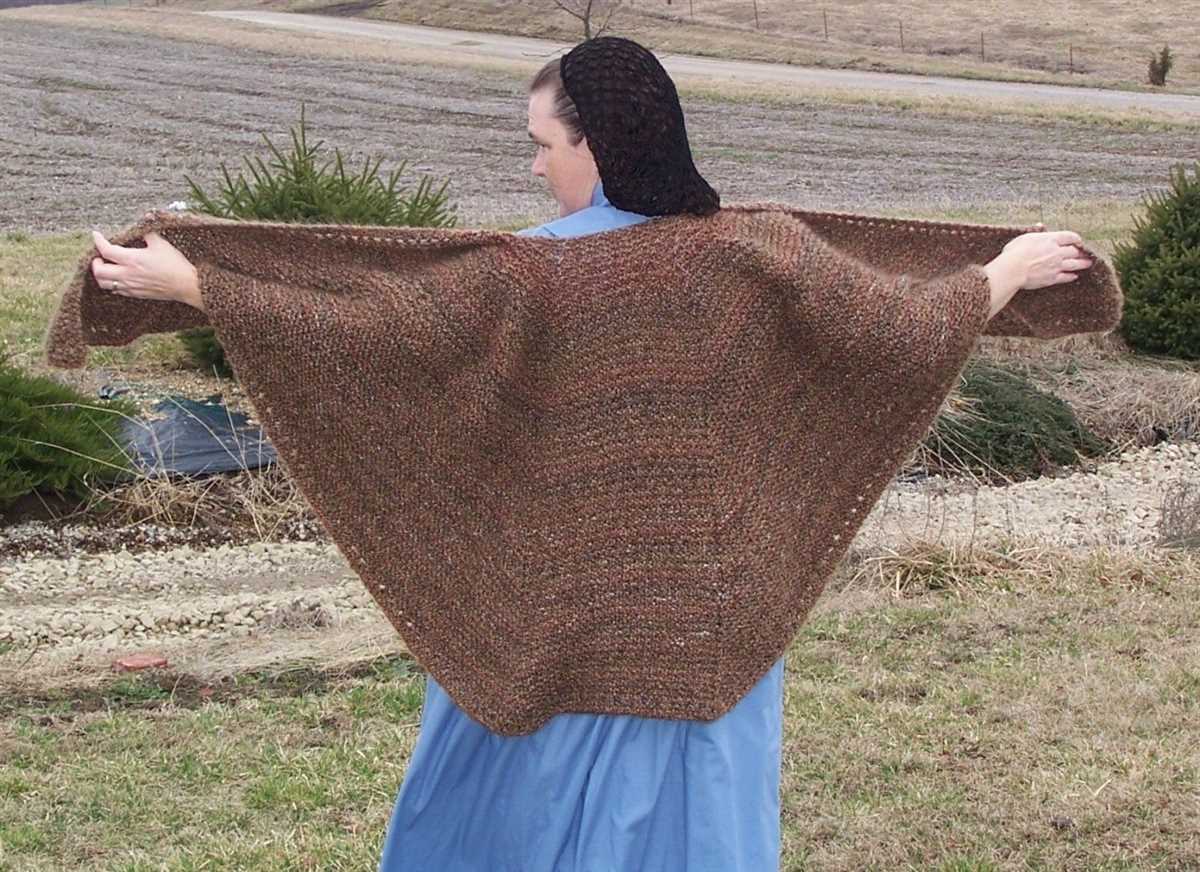
The knitting tradition in the Faroe Islands has a long and rich history, dating back centuries. Over time, the knitting patterns of the Faroe Islands have evolved, reflecting changes in fashion, technology, and cultural influences.
Traditional Faroese knitting patterns are known for their intricate designs and vibrant colors. These patterns often feature motifs inspired by nature, such as waves, birds, and flowers. The use of geometric shapes and repetitive patterns is also common. Originally, these patterns were passed down through generations of knitters in oral tradition, with each pattern having its own name and significance.
With the advent of knitting pattern books and magazines in the 20th century, the popularity of Faroese knitting patterns grew. Knitters had access to a wider range of patterns and techniques, and could easily experiment with different designs. This led to the development of new and more complex knitting patterns, as knitters sought to challenge themselves and create unique pieces.
In recent years, there has been a resurgence of interest in traditional Faroese knitting patterns. Knitters are rediscovering and reinterpreting these classic designs, incorporating them into modern garments and accessories. There is also a growing trend of combining traditional Faroese patterns with contemporary techniques and materials, creating a fusion of old and new.
Overall, the evolution of Faroese knitting patterns reflects the changing tastes and practices of knitters over time. While traditional patterns continue to be cherished and preserved, there is also room for innovation and creativity in this ancient craft.
Contemporary Uses of Faroe Islands Knitting Patterns
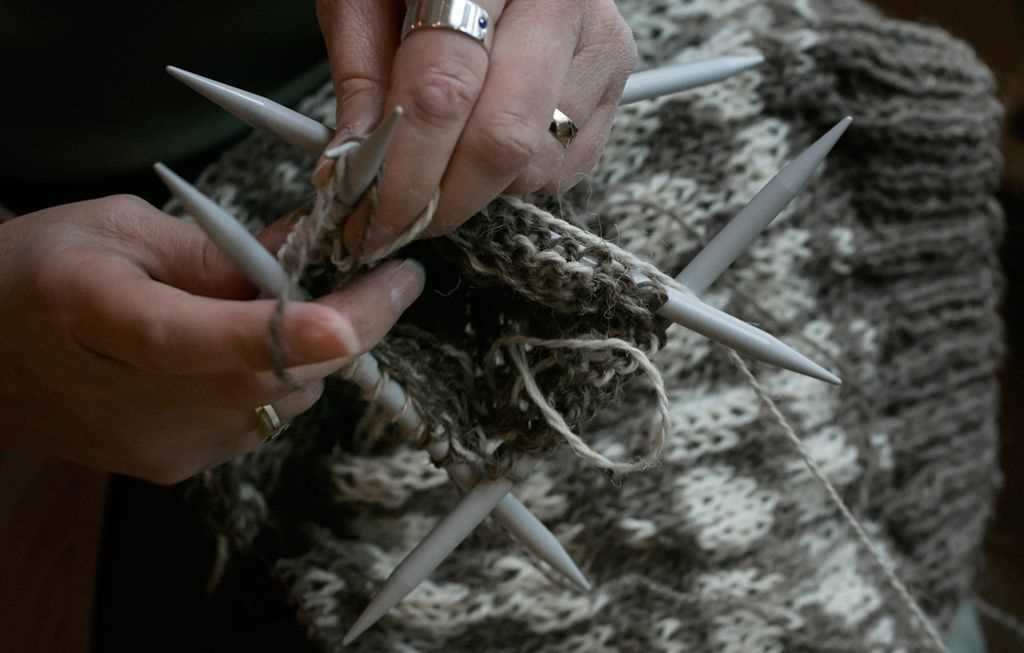
In recent years, the traditional knitting patterns from the Faroe Islands have seen a resurgence in popularity. These unique and intricate designs have been incorporated into various contemporary uses, extending beyond the realm of traditional clothing.
One prominent contemporary use of Faroe Islands knitting patterns is in home decor. The intricate motifs and patterns are now being translated onto blankets, pillows, and rugs, adding a touch of cozy elegance to any home. These pieces not only showcase the rich cultural heritage of the Faroe Islands but also provide a unique and eye-catching focal point in modern interiors.
The fashion industry has also embraced Faroe Islands knitting patterns, with designers incorporating these traditional motifs into their collections. From runway shows to ready-to-wear lines, garments adorned with Faroe Islands knitting patterns are gaining recognition for their blend of heritage and modernity. The use of these patterns adds a sense of artistry and cultural significance to the fashion world, making them highly sought after by fashion enthusiasts and collectors alike.
In addition to home decor and fashion, Faroe Islands knitting patterns have also found their way into the world of accessories and crafts. Knitting enthusiasts have taken these patterns and adapted them into scarves, hats, and mittens, allowing individuals to showcase their own craftsmanship while honoring the cultural heritage of the Faroe Islands. Furthermore, the availability of Faroe Islands knitting patterns in digital formats has allowed for their use in various digital crafts, such as cross-stitching and embroidery.
Overall, Faroe Islands knitting patterns have evolved beyond their traditional use in clothing and have found their place in contemporary design. Whether it’s through home decor, fashion, or crafts, these intricate and culturally significant patterns continue to captivate and inspire individuals around the world.
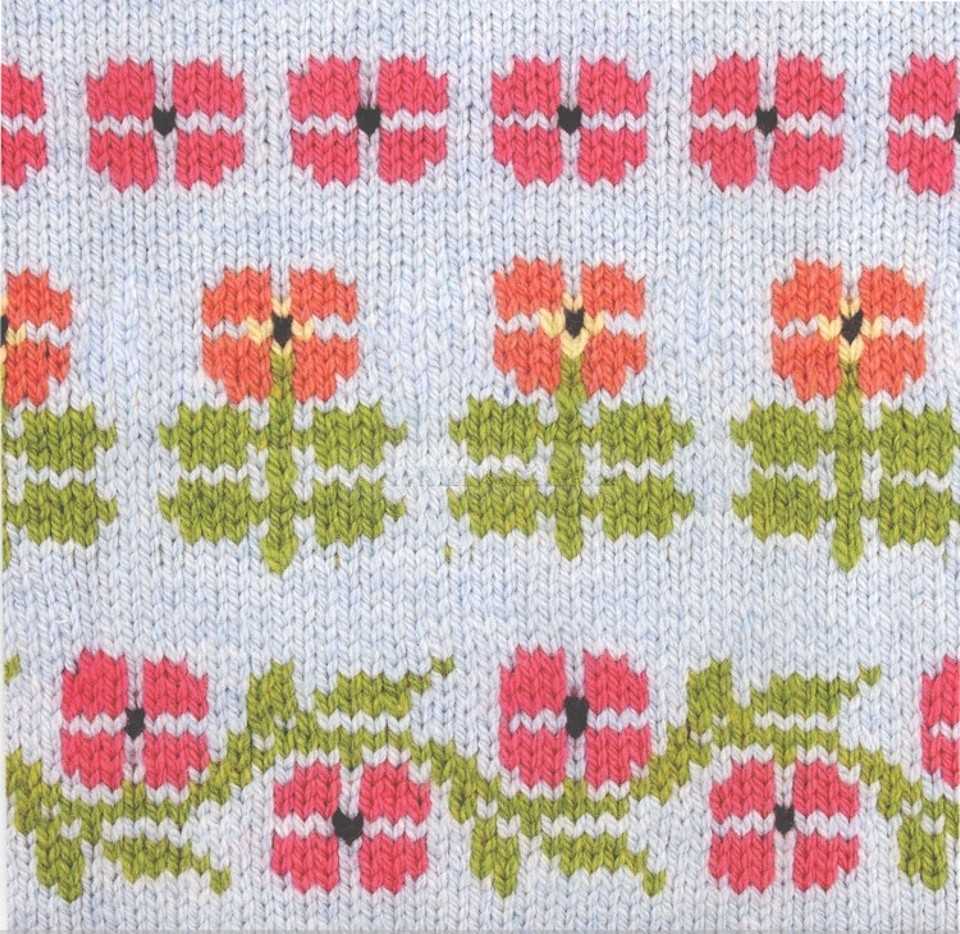
Exploring the Colorful World of Faroe Islands Knitting
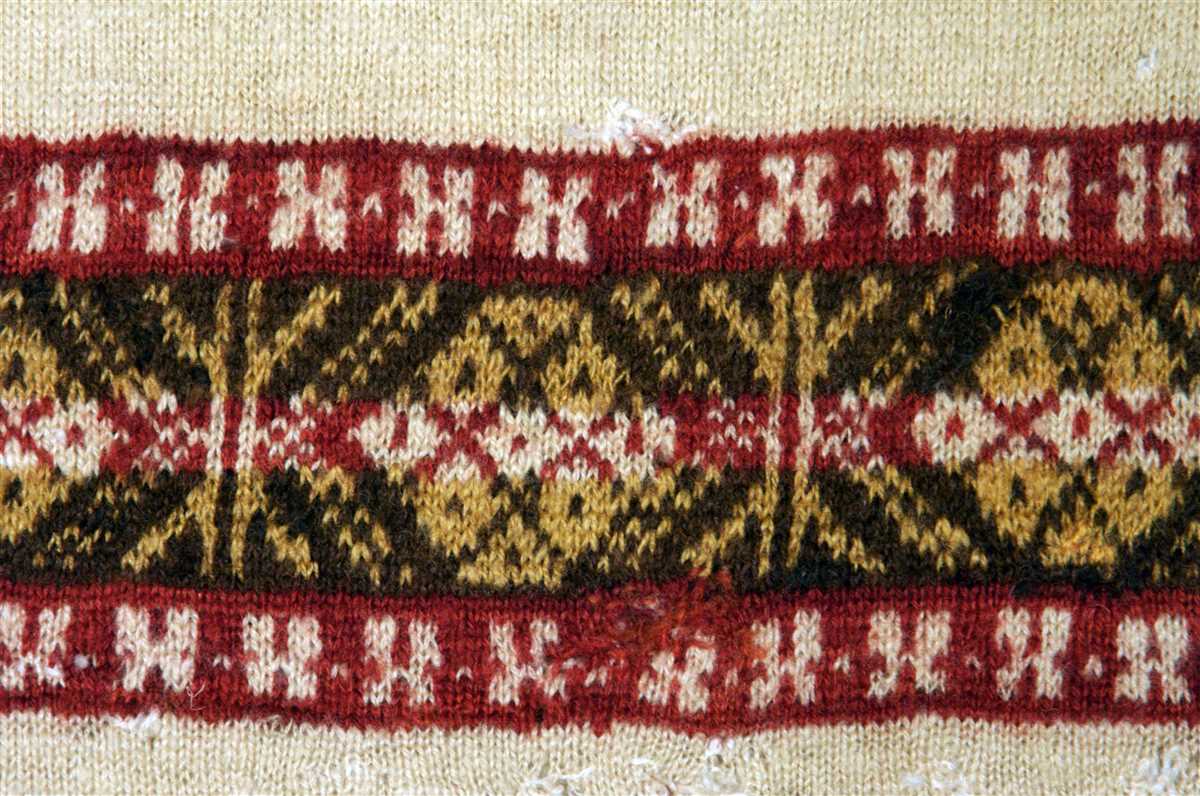
The Faroe Islands, a remote archipelago located between Norway and Iceland, are known for their rich knitting traditions. The islanders have been knitting for centuries, creating intricate patterns and designs that not only provide warmth but also tell stories and reflect their cultural heritage. Faroese knitting is a beloved craft that has been passed down through generations, with each stitch holding a piece of history and tradition.
One of the most distinctive features of Faroese knitting is its vibrant color palette. Bright, bold hues are commonly used in the traditional patterns, representing the stunning natural landscapes of the islands. From deep blues and greens inspired by the surrounding ocean to fiery reds and oranges reminiscent of the island’s sunsets, the colors used in Faroese knitting reflect the beauty and diversity of the Faroe Islands.
Traditional Faroese knitting patterns often feature motifs inspired by nature and the island’s wildlife. Delicate lace patterns depicting birds in flight, intricate fish-scale designs, and stylized representations of local flora can be found in the knitting of the Faroese people. Each motif holds symbolic meaning and is carefully selected to reflect the island’s connection to the natural world.
Faroe Islands knitting is not only about the aesthetics but also about functionality and practicality. The knitting techniques used in Faroese garments are designed to provide warmth and protection from the harsh island climate. The patterns often incorporate insulating stitches and dense textures, ensuring that each garment is not only beautiful but also suitable for everyday wear in the challenging Faroese weather.
Today, Faroese knitting continues to thrive and evolve. While traditional patterns are still cherished and preserved, contemporary designers are finding new ways to interpret and incorporate the rich heritage of Faroe Islands knitting into modern designs. Whether you are a seasoned knitter or just starting out, exploring the colorful world of Faroese knitting is a journey that allows you to connect with the history, nature, and people of the Faroe Islands.
Preserving Faroe Islands Knitting Patterns for Future Generations
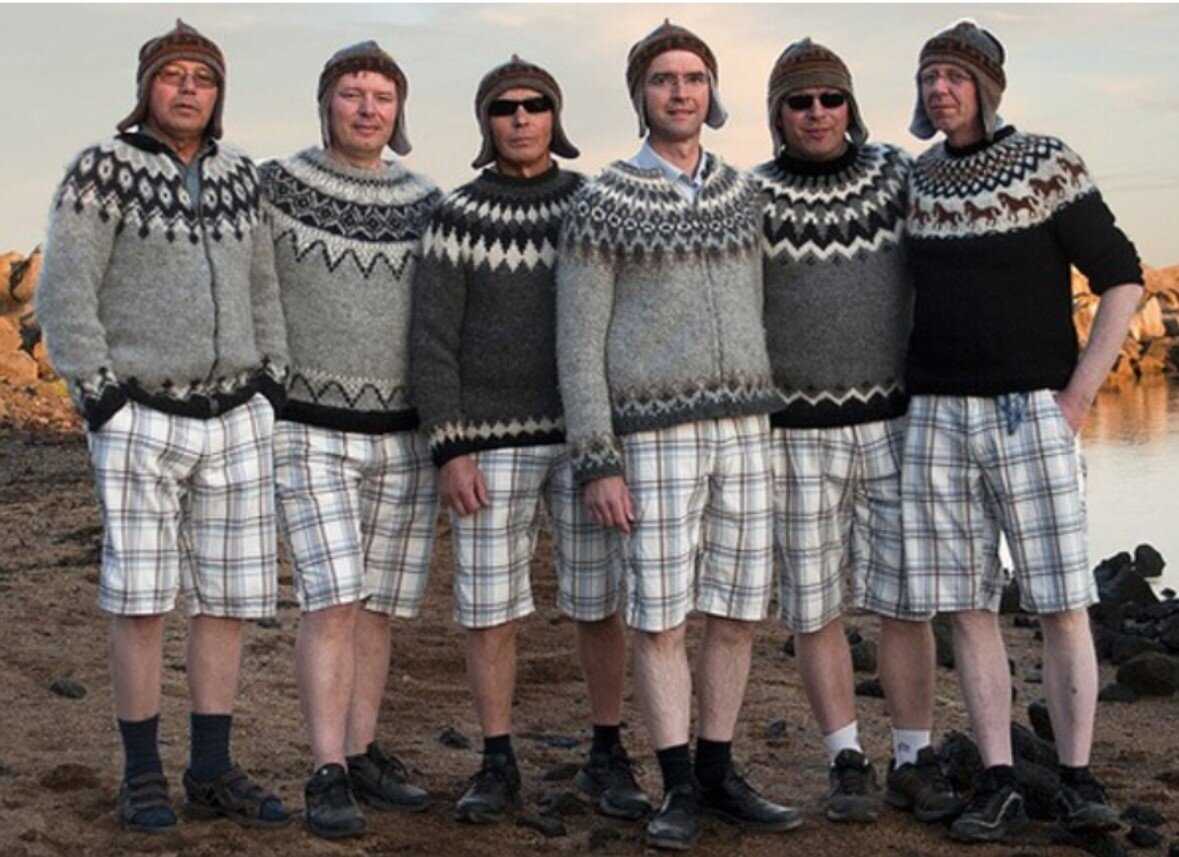
However, in recent years, there has been growing concern about the preservation of these traditional knitting patterns. With the rise of fast fashion and mass production, there is a risk that these intricate designs will be lost forever. That is why efforts are underway to collect, document, and preserve Faroe Islands knitting patterns for future generations.
Collecting and Documenting Patterns
One of the key initiatives aimed at preserving Faroe Islands knitting patterns is the collection and documentation of these designs. Knitting enthusiasts, historians, and researchers are working together to identify and catalog as many patterns as possible. They are reaching out to local communities, visiting knitting circles, and conducting interviews with experienced knitters to gather information about traditional designs.
Once these patterns are collected, they are meticulously documented, often including photographs, charts, and detailed descriptions. This documentation is crucial for ensuring that the patterns can be accurately reproduced in the future. It also serves as a valuable resource for knitters who want to learn and practice these traditional techniques.
Passing Down the Knowledge
Preserving knitting patterns goes beyond simply documenting them. It is also essential to pass down the knowledge and skills associated with these patterns to future generations. In the Faroe Islands, efforts are being made to provide knitting workshops and classes to both young and old. Experienced knitters are teaching the techniques and intricacies of Faroese knitting, ensuring that the art form continues to thrive.
In addition to formal education, there is also a strong emphasis on informal learning within families and communities. Many Faroese women learn to knit from their mothers or grandmothers, creating a sense of continuity and connection across generations. Knitting circles and social gatherings provide opportunities for knitters to come together, share their skills, and inspire each other to continue the tradition.
Preserving Faroe Islands Knitting Patterns for the Future
Preserving Faroe Islands knitting patterns is not just about safeguarding the past; it is also about ensuring that this vibrant and unique form of artistry continues to evolve and thrive in the future. By collecting and documenting patterns, passing down knowledge, and fostering a community of knitters, the Faroe Islands are taking active steps to preserve their cultural heritage for generations to come.
Celebrities and Faroese Knitting Patterns
Faroese knitting patterns have gained popularity not only among knitting enthusiasts but also among celebrities around the world. These traditional patterns, originating from the Faroe Islands, showcase the intricate designs and craftsmanship of the local artisans. Celebrities have embraced Faroese knitting patterns for their unique and timeless appeal, often incorporating them into their wardrobes or supporting the local artisans by wearing their creations on red carpets and other public appearances.
One of the most notable celebrities who have expressed their love for Faroese knitting patterns is Duchess Kate Middleton. Known for her elegant and stylish fashion choices, she has been spotted wearing various Faroese-inspired knitwear pieces during her public engagements. Her choice to showcase these patterns on a global platform has undoubtedly brought attention to the Faroe Islands’ knitting traditions and skills.
Faroese knitting patterns have also caught the attention of Hollywood stars such as Gwyneth Paltrow and Sarah Jessica Parker. These actresses have been photographed wearing Faroese-inspired shawls and sweaters, further elevating the visibility of these unique designs. The intricate patterns and high-quality craftsmanship of Faroese knitting have captured the imagination of these celebrities, who appreciate the beauty and authenticity of the traditional art form.
- Another celebrity known for her love of Faroese knitting patterns is singer and actress Rihanna. She has been seen wearing Faroese-inspired knitwear in various music videos and public appearances. Rihanna’s support for these traditional patterns has undoubtedly increased their appeal and introduced them to a wider audience.
- When it comes to the fashion industry, renowned designer Stella McCartney has incorporated Faroese knitting patterns into some of her collections. Her avant-garde approach to fashion has breathed new life into these traditional designs, creating a fusion of modern and traditional aesthetics.
- Celebrities’ embrace of Faroese knitting patterns not only highlights the beauty and craftsmanship of the Faroe Islands but also supports the local artisans who dedicate their time and skills to preserving these traditions. The global recognition and appreciation of these patterns contribute to the sustainability and continuation of this age-old craft.
In conclusion, celebrities’ love for Faroese knitting patterns has helped elevate them to a global stage, showcasing their beauty and craftsmanship to a wider audience. Their support and appreciation for these traditional patterns not only contribute to the preservation of Faroese knitting traditions but also serve as an inspiration for knitting enthusiasts around the world.
Where to Learn Faroe Islands Knitting Patterns
Finding resources to learn Faroe Islands knitting patterns can be a bit challenging, as they are not as widespread or well-known as some other knitting techniques. However, there are still options available for those interested in learning these unique and intricate patterns.
One way to start learning Faroe Islands knitting patterns is by joining a knitting group or community. These groups often have experienced knitters who are knowledgeable about traditional Faroese patterns and can teach you the techniques. Look for local knitting groups in your area or consider joining online communities dedicated to knitting and fiber arts. These communities can provide valuable resources, tips, and guidance from experienced knitters who can help you get started with Faroe Islands knitting patterns.
If you prefer a more structured approach, you may also consider taking knitting classes or workshops specifically focused on Faroe Islands knitting. Look for knitting stores, yarn shops, or craft centers that offer classes or workshops on traditional knitting techniques. These classes often cover not only the patterns but also the history and cultural significance of Faroese knitting. Check with local craft stores or search online for knitting classes in your area.
Another valuable resource for learning Faroe Islands knitting patterns is books and online tutorials. There are several books available that specifically focus on Faroese knitting patterns and techniques. These books often include detailed instructions, charts, and illustrations to help you understand and practice the patterns. Additionally, there are online tutorials and video lessons available that can guide you through specific Faroe Islands knitting techniques step by step.
In conclusion, while Faroe Islands knitting patterns may not be as readily available as other knitting techniques, there are still ways to learn and master them. Joining knitting groups or communities, taking classes or workshops, and utilizing books and online tutorials are all effective methods to start learning these unique and beautiful patterns. With practice and patience, you can become proficient in Faroe Islands knitting and create your own stunning pieces inspired by this rich knitting tradition.